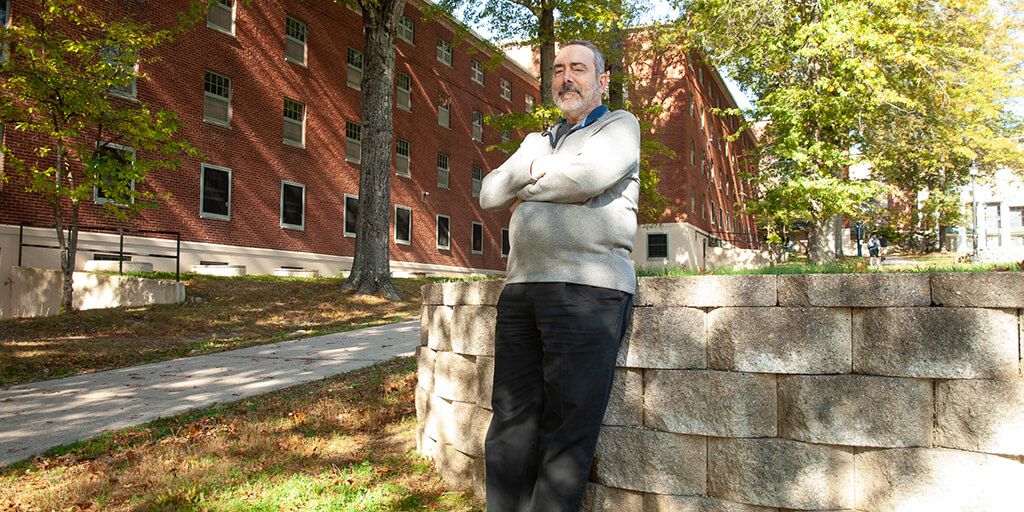Joseph Crivello discovered his love for science early in college. As a freshman at the University of Wisconsin-Madison working in research labs, he was pleasantly surprised by how much he enjoyed spending time searching for answers to how the human body works. His natural curiosity of anatomy and physiology encouraged him to pursue both a masters’ degree and a PhD in pharmacology at UW-Madison.
Following his PhD, Crivello applied to a teaching position at the University of Connecticut, from an advertisement on the back of the Science journal. Crivello got the job and found that his curiosity in exploring the mechanics of human physiology and aptitude for public speaking allowed him to thrive in this new environment.
The Trouble with Teaching
As early as the 1990s, it became clear to Crivello that the way students were being taught—the typical sage-on-stage model with a reliance on dense, expensive textbooks—was no longer effective. It was well known that textbooks often went out of date almost as soon as they were published, but the rise of the internet naturally led to shifts in these expectations. After all, if information on Google could stay up to date, surely textbooks, as a critical reference source, should be able to do the same.
This helped make the pivot to digital textbooks a natural switch for Crivello in the mid-2000s, as he wanted to stay up to date with the way content was being delivered. The impact was immediate—he saw a 40 percent increase in student adoption rates of the course material, due to increased affordability and enjoyment of the digital course materials. He also noticed that students felt more comfortable approaching him with questions about the material when it was delivered in a dynamic, engaging way.
One sticking point that remained, however, was cost. Textbooks from conventional publishers, even digital editions, remained stubbornly expensive. These students were no longer willing or able to spend $600 every semester on course materials. Crivello knew that in order to see a significant percentage of his students actually purchase any textbook he assigned in class, it had to be affordable. Crivello began looking for a more reasonably priced option to appeal to a generation of digital natives.
This search for high-quality, inexpensive course materials led him to Top Hat, where digital interactive courseware and content that he could have a direct hand in creating delivers more value at a lower price point than traditional publishers and their tools.
Teaming Up with Top Hat
Crivello co-authored the Top Hat textbook Anatomy and Physiology in Context with fellow University of Connecticut professor of physiology and neurobiology John Redden. They wanted to create a high-quality textbook with customizable, dynamic content. Moreover, the built-in interactive comprehension checks and content revision features within the textbook itself reduced the need for professors to search for, review and assign supplementary materials for students – the traditional compromise to the rigidity of a conventional textbook.
Crivello also understood that students can feel disengaged in large class sizes. He uses Top Hat to encourage small group work in his classes, which gives his students the opportunity to work together on complex topics—something that his Top Hat textbook also supports with discussion forums and peer-reviewed assessments. “It’s the much more organic, less structured, interactive sort of environment that lets students learn in a practical manner,” Crivello said.
Anatomy and Physiology in Context is designed to increase student engagement through interactivity with the likes of 3D anatomy models that help students visualize the structures and tissues of the human body, as well as case studies from practicing physicians that provide concrete clinical applications. Each chapter ends with a content summary to support student retention and the book includes a student guide to help learners prepare for final exams more efficiently. It’s also constantly revised by a collaborative group of professors with the most up-to-date information.
Crivello recognizes the importance of frequent assessments, so he embedded comprehension-check questions throughout the textbook chapters. Anatomy and Physiology in Context includes a wide array of interactive question types, including matching, sorting, click-on-target and multiple choice—many embedded with images or videos to enrich the learning experience. “The most important thing that the book does is formative and summative assessments,” he said. “It’s that constant support and provides students with the tools they need to pay attention.”
Dr. Joe Crivello received his PhD in pharmacology from the University of Wisconsin-Madison, and went on to be a post-doctoral fellow at the University of California, San Diego. In 1983, he joined the Department of Physiology and Neurobiology at the University of Connecticut, where he continues to be a professor. He has taught anatomy and physiology for the past 34 years and has a wealth of experience developing active learning exercises for use in his own classroom. Crivello is also a Teaching Fellow of the Summer Institute on Scientific Teaching, and was the Pre-Medical Advisor at the University of Connecticut and is currently the Director of Biological Sciences.


